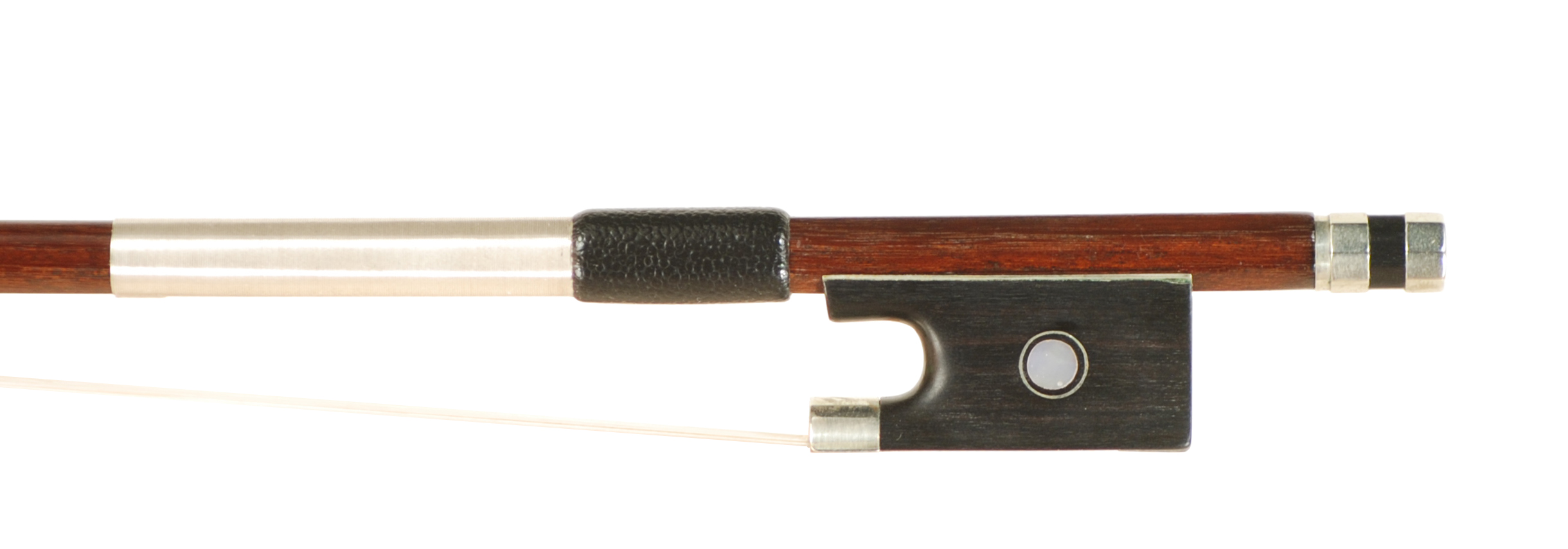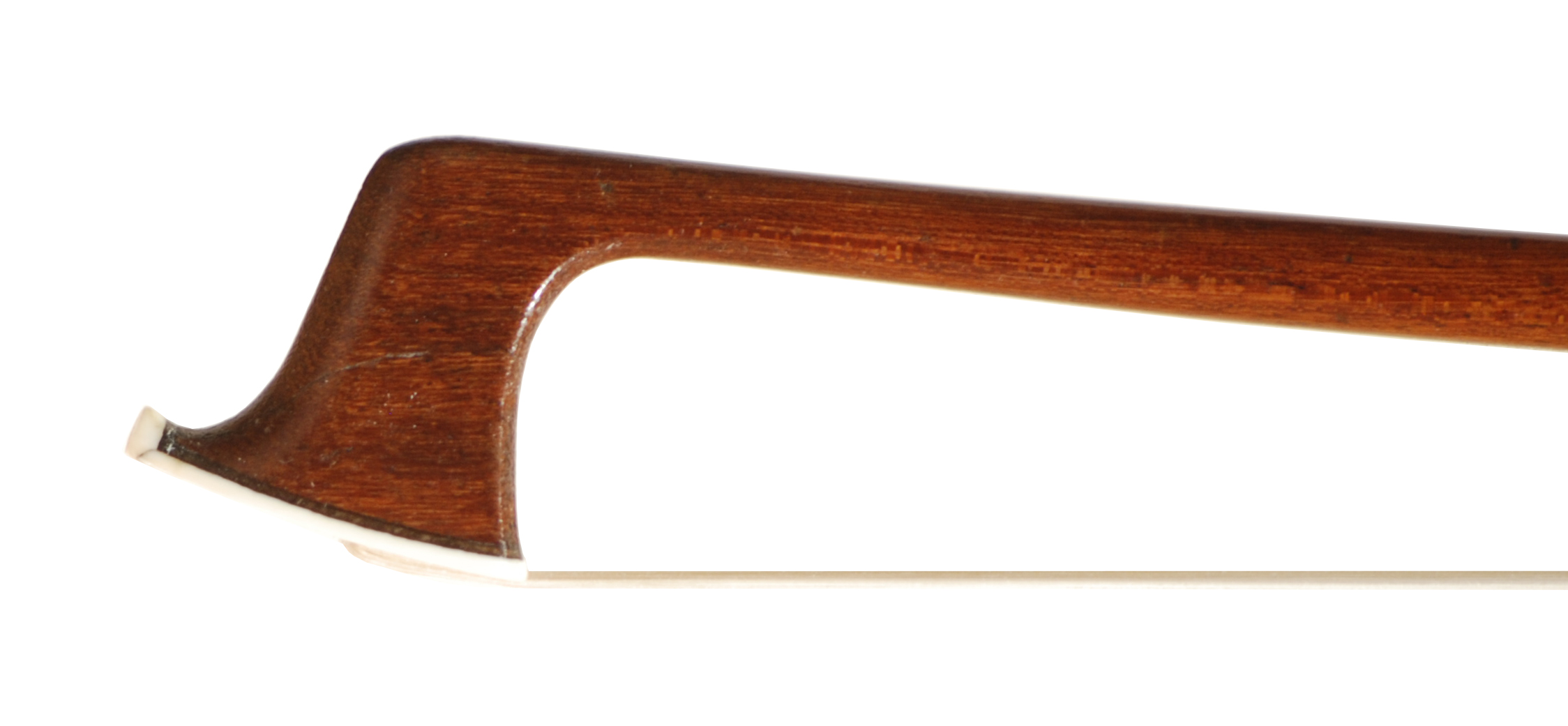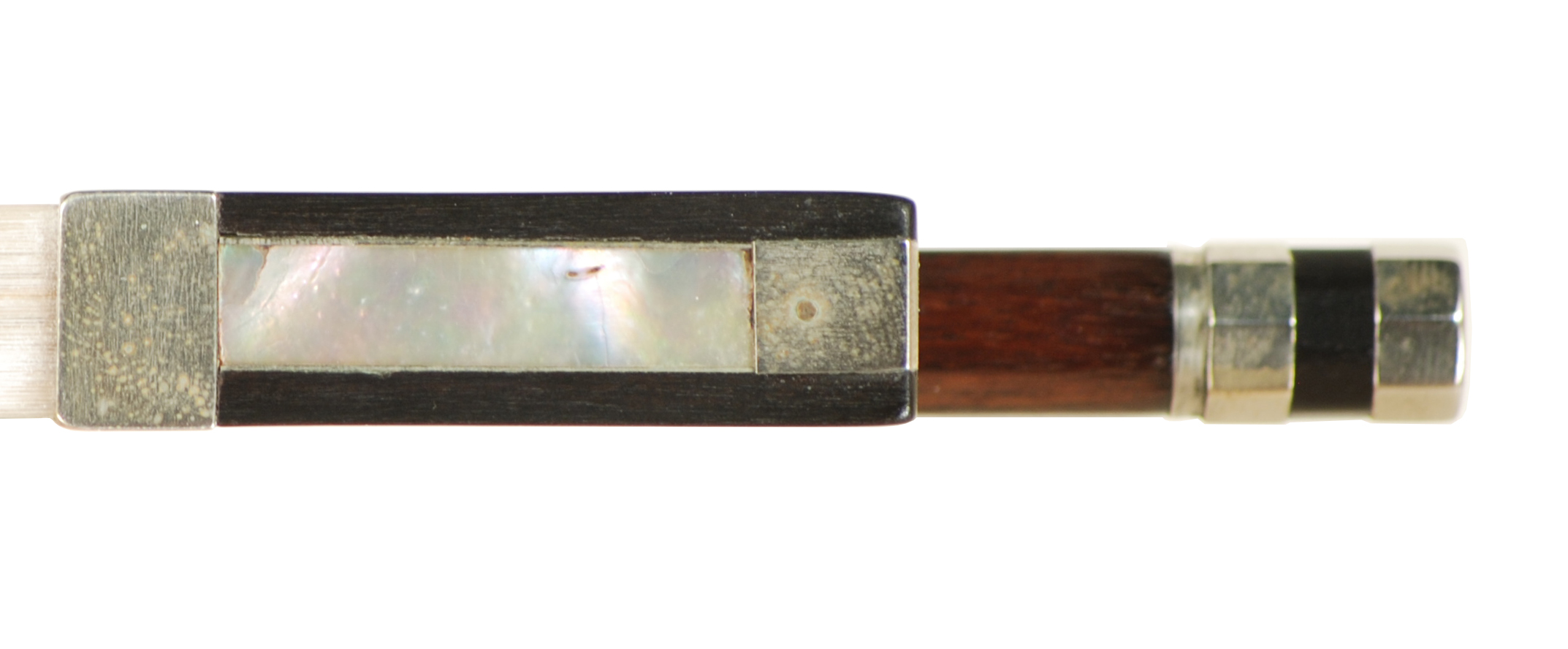Non-Stamped Pernambuco Violin Bow Markneukirchen/Saxony circa 1900 – SOLD APRIL 11, 2025 –
$835.00

Bruce Babbitt has a statement in one of his bow books, “ Everyone is in agreement that the modern perfection of the German bow started with Chrisitan Wilhelm Knopf. He was born in 1767 and listed as a bow maker in 1795, even though he probably started earlier.” Where he learned his craft is totally unknown, but his home still stands today and is now part of the Musical Instrument Museum of Markneukirchen.
In Europe, especially France and Germany, bow making was a patriarchal or family craft, and to some extent still remains so today. There was a deference to the master, which in many cases was a father, uncle, or grandfather, or another highly respected workshop member. Just like myself, youths trained as apprentices, then became journeyman; this was before even being considered a master or ready to take a making exam. In some cases, the journeyman stage was shortened if their abilities were remarkable and their sticks were sought after by famous players. Most makers started as children in the family workshop and were already highly trained by the time they were teenagers. As a maker and violin shop owner I have seen young people today, mostly those that are playing well, at some point just take off. They are able to evolve quickly as good players within 5-6 years in their early teen years. They grow in their technical abilities as well as artistically, especially if inspired by a phenomenal teacher, mentor, or parent. I got totally into carving as a young guy because of my father, who was so into birds, song birds, and birds of prey. He had trained himself to learn hundreds of calls and carved these same birds at a high level. I believe the Lord called me into the violin trade because of my family too. My grandmother being a serious violin player, my dad being a teacher and bird carver, and I grew up close to a German violin maker. That is how I grew up and developed into owning my own violin workshop business. I have a passion for the violin trade and the work has been better than fun, now in our 37th year.
If you’re passionate about playing don’t let this non-stamped bow deter you from finding out that it might just be the tool that makes your instrument jump with a sound you love.
The bow is pernambuco specie, slightly petite in its make up, but Wow, a nice player. The pernambuco is older stuff, rich dark color wood that was harvested in the early-to-mid-1800’s, then transported to Europe. The pernambuco would have been sliced up into long blocks and stacked in a building or barn for 15-20 years to air dry. The artisan would have selected the piece and began working, shaping it into a stick. The ebony frog block coming from another country of origin would have a similar story. The ebony frog is mounted in nickel silver with the linings and the one-piece heel pinned, mounting it to the ebony. The silver winding was completed in sterling to help give the bow a little more gram weight and I felt a better balance point. I decided not to replace the ivory tip. It contains a visible linear scratch that does not affect the playability and it was nice to keep it original. The bow has no markings on the stick nor the frog, indicative of an older bow made in a workshop where a young maker working with a master luthier would not have put his name on the bow. This is a very good bow that deserved the maker’s name. Hopefully, this stick finds its way to a new player who will fall in love with the bow like I did.
Weight fully haired 58.0 grams





